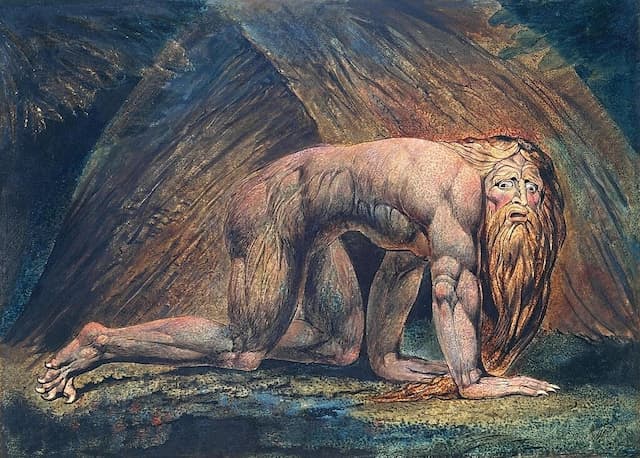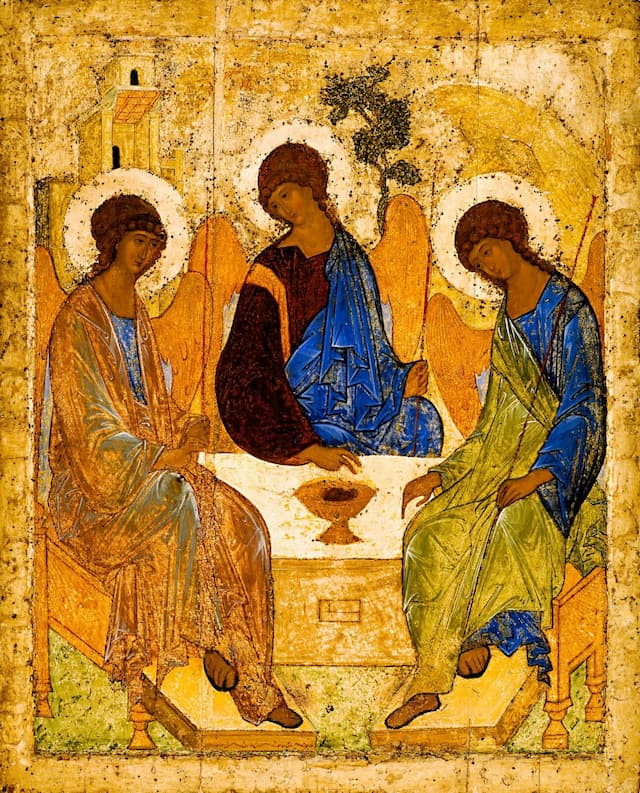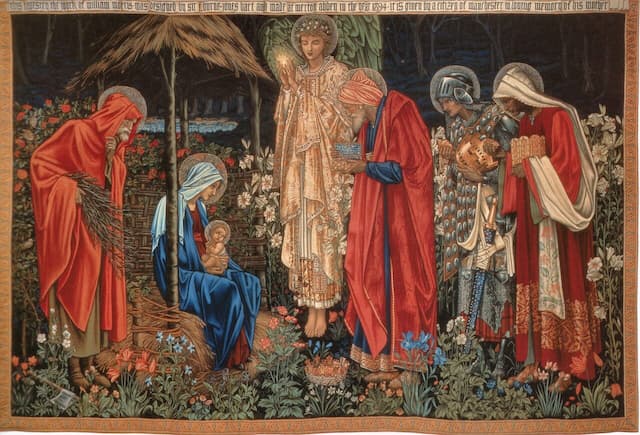Rosaries at the Grotto: The One Holy Catholic Church in Jamshedpur, India, where I grew up (From my memoir “Mind Has Mountains”) | Dreaming Beneath the Spires
May was the Month of our Lady, when Father Jesus Calvo, the Spanish parish priest, corralled the entire Catholic community of Jamshedpur to say the rosary standing outside the grotto of St. Mary’s Church, a man-made cave of rocks and mortar, overplanted with vines and flowers–modeled on the grotto at which the Virgin appeared to Bernadette at Lourdes.
“Hail Mary,” “Holy Mary,” the words rose and fell, hypnotic as the sea, 50 repetitions, punctuated by the mini-relief of the Glory Be, and the Memorare at the end, like the promise of better things: “Remember, Oh most gracious Virgin Mary, that never was it known that anyone who fled to thy protection, implored thy help, or sought thy intercession was left unaided.”
My mother bowed over her rosary, her long-lashed eyes closed, an image of fervor and devotion. My father prayed rapidly, head down, frowning, as if his own rapidity would hasten the conclusion.
Decades later, adults recalled how I slipped away, climbed to the top of the grotto, and squatted there, monkey-like, surveying the crowd. Giggles rose.
My father, hearing them, instantly looked for me. It was a reflex. There I was, on top of the grotto, the eyes of every Catholic in Jamshedpur on me.
“Anita, come down,” he hissed. I remained there, grinning. Behind my bravado was the secret I always remembered too late: I was afraid of heights.
“Anita come down,’ he hissed between clenched lips as children giggled and adults prayed, laughter in their voices. Finally, my dignified father, senior management in that company town, fifty-two years old to my seven, squeezed through the crowd, past the amputee Mrs Watkins, past Mr. D’Costa who owned Boulevard Hotel, and Mrs. D’Cruz who owned a nursery school, and crawled up the grotto, and then inched down, half-carrying me, while around us the laughter-speckled rosary rose and fell, “Hail Mary, full of grace.”
* * *
Catholic social life in Jamshedpur revolved around the Parish Church of St. Mary’s, the Catholic Family Movement, and the Mangalorian-Goan Association.
Goa and Mangalore were both colonized by the Portuguese, and four hundred years later, traces endure in the names–Mathias, Coelho, Mascarenhas, Gonsalves, Rebello, Pinto, Saldanha; the imported religion, Catholicism; and the language, Konkani, only spoken only by Goans and Mangaloreans, a patois of Portuguese and the Kannada and Marathi spoken by the indigenous communities before colonization. Konkani was officially my mother-tongue, but I have never learned it; neither did my father, who as the son of an upwardly mobile surgeon, was only taught English.
Mangalorian-Goan food too was distinctive–sarpatel, a pork curry, thickened by added pig’s blood, eaten with sannas, fluffy steamed rice cakes, fermented in toddy. Kube, a curry of clams or cockles, was breakfast at my grandmother’s house. Fish cooked in coconut milk was ubiquitous, while at teatime, people ate patolio and patrade, dumplings or pancakes stuffed with fresh grated coconut and jaggery, unrefined brown sugar, and steamed in plaintain leaves,
At the Mangalorian-Goan Association dinners, people danced the waltz, one-two together, one-two together, the fox trot, or the polka to Joan Baez, Elvis Presley, or Jerry Lewis. I flung myself between my parents in shock and a fury of jealousy the first time I saw them waltz, trying to separate them. They continued waltzing, laughing.
* * *
Mangaloreans and Goans of all social classes met at Mangalorian-Goan Association meetings. Though they were mainly professionals, there were a few Goans drawn to town as laborerers in the factory, whose children through industry and the good education provided by the Jesuit-run Loyola School—and the fair-mindedness of the Parsee-run Tata Iron and Steel company, started as manual labourers or clerks and ended as managers in a classic arc of upward mobility
I held the hand of a child of the large Andrade family who all moved to Jamshedpur from Goa, drawn by the jobs in TISCO. “Why is your hand so rough?” I asked. “Because I help my mother wash clothes,” she said. My mother had an ayah to do the washing, as I supposed everyone’s mother did. It never occurred to me that children might do the washing. “You help your mother wash clothes?” I said, genuinely shocked. Sabina, embarrassed, avoided me for the rest of our childhoods; her mother never forgave me, and neither did mine.
* * *
An American Jesuit, appropriately called Father Love, founded the Catholic Family Movement in Jamshedpur, which brought together Catholics of the same socio-economic class, an insular tight-knit group.
There were the Saldanhas, the Fernandezes, the Diases who had six children, all of whose names started with D, Denise, Danielle, Douggie, Diane, Denzil, and David. There was an Anglo-Indian family, the Thompsons, whose daughter Paula my sister Shalini adored down to her freckles and long, brown ringlets. My father claimed Shalini’s Litany of the Virgin went “Paula most pure, Paula most amiable, Paula most admirable,” and whenever I misbehaved, my father would say of Paula’s handsome brother, “Anita, if you’re so naughty, Jeff will never marry you, but he’ll marry Shalini without hesitation.”
The adults gathered together for spiritual instruction about which we felt no curiosity; we played together in the host child’s bedroom, until everyone crowded around the potluck, an innovation of the American priests. The Indian way would have been for the host to say “Oh, please don’t worry. I’ll just prepare a little something,” and then spend a week commandeering a lavish banquet.
Everyone competed to produce the most delectable dishes; we tasted, we begged the recipe. Unless it was brought by Blanche, wife of the local Mangalorian doctor, Bert Lasrado, British-trained as my father was. Blanche was the first woman in town with a self-contained freezer; its potential exhilarated her. While others brought freshly-cooked aromatic dishes, she announced the provenance of her offering–prawn balchow: three months old; chicken indad: six months old; lamb vindaloo: eight months old, to general consternation and withering of appetites.
We served what we called “western food”; rather to my surprise, when I immigrated to England, I found nothing like the delicious “English” food I had grown up with–“pan rolls,” crepes, fried in egg and bread crumbs, filled with spicy ground beef we called minced meat. “Potato chops,” mashed potato patties with the same spicy minced beef filling, pan-fried in a batter of egg and bread crumbs. “Cutlets,” like hamburgers, except that they were cooked with onions, green chilis, coriander and mint. “Meat puffs,” crisp hot pastry stuffed with curried minced lamb and onions.
After dinner, Dougie Diaz or Benny Fernandez produced guitars and led us in “Jamaica Farewell,” “Old Man River,” or “Banana Boat Song,” the blues being particularly popular, or “Clementine,” “Silver Dollar,” “Country Roads” or “Una Paloma Blanca.”
The lyrics were mysterious, but we sang along
Met her on the mountain,
Swore she’d be my wife,
But the gal refused me
So I stabbed her with a knife.
Hang down your head Tom Dooley
Hang your head and cry,
Hang down you head Tom Dooley
Poor boy you’re gonna die.
We similarly sung along to the Beatles song,
Desmond has a barrow in the marketplace
Molly is a singer in the band,
Oh bloodee, oh blood-dah,
the chorus striking us as deliciously naughty.
My father had been to America, but most of us hadn’t. Still we sung the nonsense rhyme knowledgeably,
I’ve come from Alabama with a banjo on my knee,
I’m going to Louisiana, my true love for to see
It rained all night the day I left, the weather it was dry
The sun so hot, I froze to death, Susannah, don’t you cry.
What did all the lyrics mean? Who knows? But it all felt magical…Daylight come and I wanna go home.
~~~~
We rented a beach house in Puri, Orissa, with the Diases, Thompsons, and other CFMers, one of whom brought his gun, and shot doves, pigeons and even sparrows, which we roasted over an improvised fire of bricks and sticks–delicious. Their son was allowed to handle the gun, and I, aged seven, seeing it left unattended, picked it up, looked through the sights and pulled the trigger. The safety catch was off; bang!! I was terrified and exhilarated, though I did not shoot a bird (or myself). The father ran out and cuffed his son, and I felt ashamed and guilty for it had all been my fault.
Many Catholic families began to emigrate in the early seventies; the Diazes, the Thompsons and D’Costas to Canada; the Gomes to Australia, and the Fernandezes to America. We implored my father to emigrate too, but he refused. He had been an immigrant in London in his twenties and thirties; there was no way he was going through that in his fifties, and there was no budging him. With the emigrations, the C.F.M changed, and we stopped going.
* * *
The Catholic Diocese of Jamshedpur was a missionary project of the Jesuit Maryland Province in Baltimore; it was run by hearty, good-hearted Irish-American priests: Father McGauley, Father MacFarland, Father Guidera, and Father O’Leary, the Parish Priest. There was a scattering of other priests from the world-wide fraternity of the Jesuits–Father Durt, a Belgian, who built St. Mary’s Hindi School for underprivileged children, and, on loan from the Spanish Gujarat Mission in Ahmedabad, Father Calvo, a kindly Spanish priest, who helped me develop a magnificent stamp collection, by asking everyone to send me stamps from the 1968 Olympics in Mexico.
The Jesuits were respected, even loved, by Jamshedpurians, Catholic and non-Catholic, for they also ran Loyola School which turned out well-educated, achieving boys, and the local Business School, Xavier Labor Relations Institute (at which my father was a Financial Controller and Professor for eight years) whose very competitive course in Business Management and Industrial Relation drew students from all over India, as well as Iran, Malaysia and Nigeria.
We had the American Jesuits over for meals and parties, and ate at the Jesuit residence, particularly when my father’s brother, Father Theo Mathias, was Director of XLRI. My father could not get over the fact that, unlike Indian Jesuits who, at that time, came from upper or upper-middle class educated families, among American Irish Catholics, one son became a priest, one became a cop, and one a crook, or so the priests told us! When Father O’Brien told us of his father, the butcher, who distilled and sold moonshine in Baltimore during Prohibition, my father marveled. “Can you imagine, Anita? Father O’Brien is a butcher’s son! And his father, though a pious Catholic, had no compunction about breaking the law!”
* * *
The priests returned from furlough with coveted American brand names–Campbell’s chicken noodle soup, Smarties, Jello, Betty Crocker cake mixes, Danish Butter Cookies, cans of Spam, squeezable tubes of icing, everything foreign having cachet. These they gave to their favourite Catholic housewives who compared their loot, apparently carelessly, “Oh Father MacFarland is so sweet; he got me lovely Devil’s Food Cake mix,” happy if their loot was the most and best, and secretly cross about Lola or Deidre’s Angel’s Food cake.
From America too came boxes of lightly used clothes that had been collected for the poor in India; these were given to favourite parishioners, or sold at jumble sales to middle class Catholics, the proceeds used for the poor. Some of my loved clothes came via America—my fuchsia winter coat for my Himalayan boarding school, a red plaid coat with a fur collar; an shimmering silk blouse with mother of pearl buttons that I passed off as school uniform; a pale blue silk dress, red galoshes.
From boxes of donated books shipped from America, I acquired precious, influential books: Catherine Marshall’s “Beyond Ourselves,” and “Something More,” “The Cross and the Switchblade,” and “Run, Baby Run.” Boxes of old magazines arrived: Chatelaine, McCalls, Family Home Circle, and Good Housekeeping, in which we found the recipe for walnut brownies, adding a new much-imitated item on the party circuit. I leafed through the glossy pages, craving dolls that walked and talked, doll houses, walkie-talkie radios one could receive by sending in a postcard; glossy magazines of dreams, never gratified in my childhood, though my Uncle Theo did buy me a Barbie doll on his annual trip to the States even after I entered my teens and was more interested in make-up than dolls.
The more radical Jesuits’ sympathy with the Adivasis, oppressed tribal peoples, was in advance of the political sensibilities both of the government, who were suspicious of the priests and hassled them at visa renewal time, and of other Indian Catholics, who wondered what the fuss was about. “Damn histrionics,” the men muttered at our parties. I wonder if they were disappointed to be sent to India and end up educating the children of the upper classes and aspirant middle classes.
* * *
The Catholics from Mangalore, Goa and Bombay (all converted by the Portuguese) traditionally visited each other between Christmas Day and the 6th of January, the feast of the Epiphany, when the Magi visited Jesus.
Weeks before Christmas, my mother began creating the distinctive Christmas food, kushwar in Konkani, offered to visitors, and given in little boxes to my father’s colleagues, and to nuns, teachers, priest, and friends, Hindu or Christian. And at Diwali (with much jubilation), we got little boxes of Indian sweets from our Hindu friends.
We made Christmas cake, of course, crammed with candied peel, cherries, raisins and nuts; chocolate nankatis, like Danish butter cookies, soft, buttery, sugary; light, crisp, “meringues”; crunchy coconut macaroons; fudges, halwas and barfis, made of milk, sugar, clarified butter, and coconut, carrots, beetroots or pumpkin.
Kulkuls were another Mangalorean specialty, dough curled on a fork into shells, deep-fried, then dipped into a thick, simmering sugar syrup, until they were lumpily, unevenly, deliciously coated.
We hand-crafted the sweets, sitting together around the dining table, pouring ‘milk toffee,” made from condensed milk, into our buttered red rubber seashell mould to create cockles, mussel, wentletrap, shrimp, seahorse, oyster, shrimp and snails.
The piece de resistance was home-made marzipan we handcrafted into exquisite cherries, apricots, oranges and pears, painting a blush on the peaches, shading the apples in red, denting the strawberries with toothpicks, completing the verisimilitude with a little wooden stem, and a cloth leaf, bought from a confectioner in Calcutta, and reused each year.
* * *
How foreign Christmas was when I was a child, how imported. We lopped the top off one of the two scraggly fir trees in our garden, hauling it indoors to deck it with cotton wool or popcorn snow. We sent each other Christmas cards of robins in snowy fields and sleighs in an entranced Snow Queen landscape, though the sun blazed all December as it might have done in Bethlehem. We carolled outside all the Catholic houses, singing Rudolf the Red-nosed Reindeer; Freddy, the Little Fir Tree, and Jingle Bells–a Nordic Christmas transplanted to the tropics.
Congregations that barely knew English sung Gloria in Excelsius Deo in Latin at midnight mass. And then we returned home to eat Christmas fruit cake, and drink the very sweet homemade wine made from raisins or jamun and mulberries from our garden that we never considered alcoholic, so much so that, decades later, I was amazed to see people smile when I sat at a party, a glass of wine in my hands, and declared I was a teetotaler!
And what did all this have to do with the sweet, humble birth in a manger? Generations of westerners had successfully transported the husk of Christmas to Indian homes, while the kernel lay forgotten, in India, as elsewhere, as elsewhere. Still, glor-ooo-ooo-reeaa in ex-cel-sius Deo, we sung, though many would have been nonplussed if asked to translate.
* * *
This is a slow-growing memoir, but here are the chapters I’ve written
In the Beginning: Rosaries and Steel
Jamshedpur: The Steel City where I was Born
I Saw the Moon Rock: The Clubs of my Childhood
Visiting: When People were Entertainment
The Parks and Restaurants of my Childhood in Jamshedpur, when All was Magical
Polyphemus the Cyclops: A Memoir of My Father, Noel Joseph Mathias. Part 1, My father as an immigrant in England, At Play with my Father, The Things my Father Said, The Eccentricities of my Father
Palaces of Peace and Dreaming: The Libraries of my Childhood
My Grandmother, Small Nana, Molly Coelho; My Grandfather who lived by the sea and taught me to love poetry; My Uncle Eustace, The Maharaja; My Uncle Mervyn; My Maiden Aunt, Joyce; Youpee or UP, my Grandparents’ Formidable Landlady; Decembers in Gay Bombay
Travels with my Father; Mangalore: My Ancestral Hometown, Dreaded Family Evening Prayers at my Grandmother’s House; My Great-Uncle Norbert, a Pious Crook, My Grandmother, Josephine, and My Grandfather, Dr. Piedade Felician Mathias, My Father’s Sisters: Ethel the Grand Duchess, and Winnie, the Duchess; Christmas in Mangalore, and Mandatory Visits to All our Nun Relatives; And Mandatory Visits to Everyone Else, My saintly great-aunt Rosie, and her rebel daughter Marie; Arranged Marriages and the Consequences of Small Town Inbreeding.












